You are using an out of date browser. It may not display this or other websites correctly.
You should upgrade or use an alternative browser.
You should upgrade or use an alternative browser.
Images from the Footprint of Mussolini
- Thread starter Waltzing Brunhilda
- Start date

European Cover Art for the 1999 Playstation First Person Shooter Medal of Honor. Set in the Second World War, players don the helmet and boots of Jimmy Patterson, a ficitonal GI who is tasked by the Office of Strategic Serivces to go behind German lines and cause mayhem. While Wolfenstein was the first World War 2 game, Medal of Honor was the first to actually try for historical accuracy. Guns were modeled to be as accurate as graphic settings of the time would allow, along with uniforms being as close to history as possible. Missions would take Patterson from occupied France to the gates of Berlin as he sabatoged factories and shipyards, sank prototype U-Boats, thwarted Nazi atomic bomb research and destroyed a massive armored train. The game sold well and was dubbed "Game of the Year" by many review magazines and sites, and would spawn the Medal of Honor Franchise that has run to the modern day.

North American Cover for the sequel to Medal of Honor: Underground, released in 2000 by Electronic Arts. Players assumed the role of Sosha Birnfeld, a German-Jewish woman whose brother was killed by the Nazis. After being transferred to Libya, Sosha would catch the eye of Colonel Hargrove, an American Officer in the Office of Strategic Services, and was offered a job. After her first mission to assassinate a German commander in southern France, she would swiftly find herself put on other missions, ranging from helping to break the siege of Trieste to uncovering information on the Holocaust. Other missions would involve her destroying a prototype jet bomber laden with sarin bound for Washington DC, and helping to orchestrate the breakout of Allied POWs from a prison camp in Germany. The game sold well and is considered by many to be one of the best PS1 games.
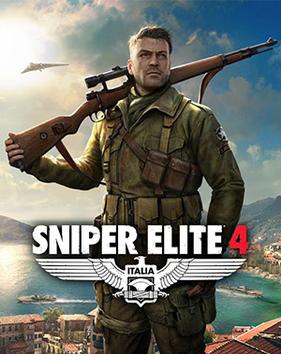
Cover art for the 2017 Stealth Third-person Shooter Sniper Elite 4, technically a prequel to the 2012 Sniper Elite V2, being set in the Italian Theater of war. Most of the game is set during the Battle for Trieste, with the main character, Karl Fairburne, being an Allied operative on loan to the Italians. During the course of the fighting, he uncovers a plan by the Nazis to use an atomic bomb to wipe out the city, putting him on a winding trail that takes him from Trieste to the German Alps. The game was praised for its open-ended maps and gameplay, as well as it's gunplay. It sold well and is considered to be one of the best in the series.
Promotional poster for the 1992 anime film "Porco Rosso", about a World War I pilot who was turned into a pig owing to a curse. Throughout the film, Porco fights sky pirates, first as a freelancer, but then alongside an American and Italian pilot (albeit with much teeth-clenched teamwork) when the sky pirates are hired by the Soviet Union. It includes the iconic line "I'd rather be a pig than a communist!"
How ironic lol.It includes the iconic line "I'd rather be a pig than a communist!"
Released in 1954, the British animated film Animal Farm was an adaptation of George Orwell's 1945 novel, which received funding in part from the United States and Italy. While the novel had ended on a bleak note, the film would end much more positively as the pigs (an allegory for Stalin and his lackeys) are ultimately overthrown (there's also an extended scene where an increasingly mad Napoleon eliminates many of his underlings). This would end up proving to be prophetic with the collapse of the Soviet Union in 1971.
A leaked image from the faked Soviet Moon-Landing.
American actor Harrison Ford talking about his love for Star Trek as whole in 1989.
In the episode a freighter docks at Bethel Station so one of its passengers may receive treatment for a condition called Terothka virus aka Tuvan Syndrome, which was caused by a mining accident at a brutal labor camp near the city of Lakat during the occupation of Cardassia. As the patient is a Romulan, Lieutenant Jiaki Ghaanrar (played by Sigourney Weaver) has the man arrested as a war criminal, only to find his name, Thamok s'Droall, is not listed for any crimes. Station commander Braxton Kinton (played by Billy Dee Williams) sees no option but to release s'Droall, but Jiaki is adamant as Thamok is a Romulan who was present at the Lakat Camp, which for her is reason enough. Kinton decides to investigate further and has the man held in custody. Noting a conflict of interest, Kinton orders Jiaki to remove herself from the case, but her emotional plea and a promise that she will remain professional convinces him to let her continue.
When she interrogates the Romulan she discovers that Thomak is actual Helito s'Radaik, the brutal camp commandant of the Lakat Camp during the 24 year long occupation of Cardassia by the Romulan Star Empire and the man responsible for the infamous seven massacres at Lakat (both the city and nearby camp) earning him the nickname “the Lakat Liquidator” in which the last of these massacres at least numbered 29,000 labourers dead (these massacres being part of the Cardassian Decimation).
Upon this revelation, the Romulan is to stand trial for his war crimes that is until Commander Kinton makes a discovery that Helito is in fact Thamok – at first Jiaki doesn’t believe him as she remains steadfast in her conviction to see Lakat Liquadator brought to justice that is until she finds out a Romulan state secret from a defector-turned doctor, that secret being that Helito s’Radaiak has been dead for 5 years.
Armed with this new knowledge, the Cardassian confronts “Helito” telling him that she knows he’s Thamok s’Droall. “Helito” vehemently denies this going on a rant about how he laments that he couldn’t kill more Cardassians prior to the Romulan withdrawal from Cardassia. However, when Jiaki presses him further the Romulan’s mask comes off and he breaks down sobbing uncontrollably as he remarks what a coward he is for not stopping the atrocities at Lakat. Thamok is released from custody but demands that he be put on trial and executed so that Romulus will acknowledge the Decimation and accept guilt over it. He is eventually convinced to instead be a whistleblower who sheds light on the atrocities that took place on Cardassia and ultimately becomes the Romulan ambassador to Cardassia after Romulus democratises to start the process of reconciliation and healing in later episodes. The episode is a reference to the Italian concentration camps during the “Pacification of Libya” and a reference to the ethnic cleansing of Slovenes from their homeland during the latter stages of WWII and its immediate aftermath and the erasure of the Slovenes’ language, customs, and culture in the following decades by the Fascist regime of Benito Mussolini and his successors which has continued to this day (though to a much more relaxed degree since re-democratisation). The following is an excerpt of an exchange between Thamok and Jiaki:
Jiaki: You're Thamok, aren't you?
Thamok: You believe me to be that insect? That whimpering slime? You stupid pathetic Cardassian woman, don't you know who I am? I'm your greatest fear. I'm the night terror that keeps you up at night. I'm the Lakat Liquidator!
Jiaki: The Lakat Liquidator died five years ago! You’re Thamok s’Droall, one of the camp filing clerks!
Thomak: Oh you couldn’t be more wrong you Cardie Spoonhead! I am alive. Alive and well! It's Thomak who's dead! Thomak, who was good for nothing but cowering under his bunk and weeping like a frightened child. Who every night covered his ears because he couldn't bear to hear the screaming...for mercy or terror...from Cardassians...[breaks down into tears, sobbing uncontrollably then collects himself and sighs heavily]
Thomak: You don’t have a clue as to what it's like to be a coward...to see those horrors everyday…see the looks of terror and sorrow on the faces of men, women, and children as they beg for their lives…and just stand there and do nothing…there was even one time when a little Cardassian girl, couldn’t have been no older that six, pleaded with the guards to let her go after a failed escaped attempt…promising that she won’t be a Cardassian anymore…I saw that little girl have tears streaming down her face and heard her bellowing out the most pained cries of abject terror one could imagine as the guards took her back to the mines where her family had died and I just stood there cowering…just stood there [Thamok gazes into the distance with a thousand yard stare before coming back to reality]…Thomak is dead, he deserves to be dead.
Last edited:
Excellently written.View attachment 871877This jovial attitude of Ford’s quickly turned serious when asked about his role as prominent Romulan file clerk Thamok s'Droall for Camp Lakat during the Romulan occupation of and subsequent genocide on Cardassia, though it is known as the “Cardassian Decimation”, during the first season of Bethel Station (episode 12: Of Meek Monsters).
American actor Harrison Ford talking about his love for Star Trek as whole in 1989.
In the episode a freighter docks at Bethel Station so one of its passengers may receive treatment for a condition called Terothka virus aka Tuvan Syndrome, which was caused by a mining accident at a brutal labor camp near the city of Lakat during the occupation of Cardassia. As the patient is a Romulan, Lieutenant Jiaki Ghaanrar has the man arrested as a war criminal, only to find his name, Thamok s'Droall, is not listed for any crimes. Station commander Braxton Kinton (played by Billy Dee Williams) sees no option but to release s'Droall, but Jiaki is adamant as Thamok is a Romulan who was present at the Lakat Camp, which for her is reason enough. Kinton decides to investigate further and has the man held in custody. Noting a conflict of interest, Kinton orders Jiaki to remove herself from the case, but her emotional plea and a promise that she will remain professional convinces him to let her continue.
When she interrogates the Romulan she discovers that Thomak is actual Helito s'Radaik, the brutal camp commandant of the Lakat Camp during the 24 year long occupation of Cardassia by the Romulan Star Empire and the man responsible for the infamous seven massacres at Lakat (both the city and nearby camp) earning him the nickname “the Lakat Liquidator” in which the last of these massacres at least numbered 29,000 labourers dead (these massacres being part of the Cardassian Decimation).
Upon this revelation, the Romulan is to stand trial for his war crimes that is until Commander Kinton makes a discovery that Helito is in fact Thamok – at first Jiaki doesn’t believe him as she remains steadfast in her conviction to see Lakat Liquadator brought to justice that is until she finds out a Romulan state secret from a defector-turned doctor, that secret being that Helito s’Radaiak has been dead for 5 years.
Armed with this new knowledge, the Cardassian confronts “Helito” telling him that she knows he’s Thamok s’Droall. “Helito” vehemently denies this going on a rant about how he laments that he couldn’t kill more Cardassians prior to the Romulan withdrawal from Cardassia. However, when Jiaki presses him further the Romulan’s mask comes off and he breaks down sobbing uncontrollably as he remarks what a coward he is for not stopping the atrocities at Lakat. Thamok is released from custody but demands that he be put on trial and executed so that Romulus will acknowledge the Decimation and accept guilt over it. He is eventually convinced to instead be a whistleblower who sheds light on the atrocities that took place on Cardassia and ultimately becomes the Romulan ambassador to Cardassia after Romulus democratises to start the process of reconciliation and healing in later episodes. The episode is a reference to the Italian concentration camps during the “Pacification of Libya” and a reference to the ethnic cleansing of Slovenes from their homeland during the latter stages of WWII and its immediate aftermath and the erasure of the Slovenes’ language, customs, and culture in the following decades by the Fascist regime of Benito Mussolini and his successors which has continued to this day (though to a much more relaxed degree since re-democratisation). The following is an excerpt of an exchange between Thamok and Jiaki:
Jiaki: You're Thamok, aren't you?Thamok: You believe me to be that insect? That whimpering slime? You stupid pathetic Cardassian woman, don't you know who I am? I'm your greatest fear. I'm your the night terror that keeps you up at night. I'm the Lakat Liquidator!Jiaki: The Lakat Liquidator died five years ago! You’re Thamok s’Droall, one of the camp filing clerks!Thomak: Oh you couldn’t be more wrong you Cardie Spoonhead! I am alive. Alive and well! It's Thomak who's dead! Thomak, who was good for nothing but cowering under his bunk and weeping like a frightened child. Who every night covered his ears because he couldn't bear to hear the screaming...for mercy or terror...from Cardassians...[breaks down into tears, sobbing uncontrollably then collects himself and sighs heavily]Thomak: You don’t have a clue as to what it's like to be a coward...to see those horrors everyday…see the looks of terror and sorrow on the faces of men, women, and children as they beg for their lives…and just stand there and do nothing…there was even one time when a little Cardassian girl, couldn’t have been no older that six, pleaded with the guards to let her go after a failed escaped attempt…promising that she won’t be a Cardassian anymore…I saw that little girl have tears streaming down her face and heard her bellowing out the most pained cries of abject terror one could imagine as the guards took her back to the mines where her family had died and I just stood there cowering…just stood there [Thamok gazes into the distance with a thousand yard stare before coming back to reality]…Thomak is dead, he deserves to be dead.
View attachment 871962Sigourney Weaver circa 1989 (top). Music from “Of Meek Monsters” specifically the part where Thamok’s charade fell apart (bottom).
Thank you very much!Excellently written.
You’re welcome! Shows a much more human and good side to this timeline despite everything that’s happened.Thank you very much!
Well as stated by people before, many times in fact, this timeline isn’t fascist apologia or a dystopia it’s just different.You’re welcome! Shows a much more human and good side to this timeline despite everything that’s happened.
On that note, one could argue that, if OTL was written in FoM, it would be condemned for being a work promoting Communist Apologia.Well as stated by people before, many times in fact, this timeline isn’t fascist apologia or a dystopia it’s just different.
Exactly. Hell just look at Democratic Kampuchea! I’d rather live in FoM Italy at the height of Mussolini’s power and popularity over Kampuchea.On that note, one could argue that, if OTL was written in FoM, it would be condemned for being a work promoting Communist Apologia.
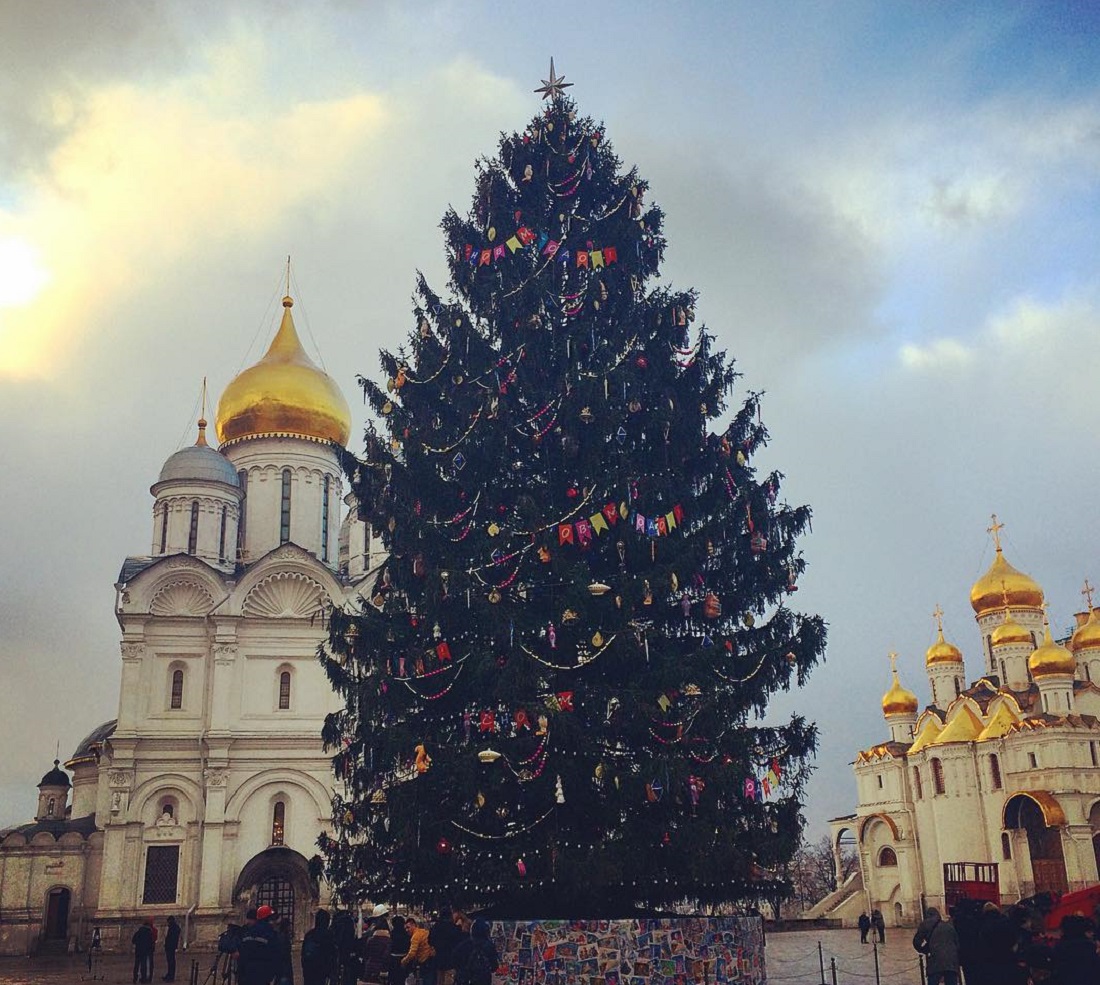
Christmas three in Moscow, Russia in 2020
In 1983 government and Russian Orthodox Church decided that Christmas will be celebrated at end of December instead early January what Orthodox Churches have already long time done due Julian Calendar. Soon other Orthdox Chruches decided to adopt Gregorian Calendar what is used on the West. Unlike in rest of Europe and North America in Russia Christmas has not became such commercial holiday since Russia government has seen that un-christian. So in Russia Christmas is ratherly more religious event and it focuses more to help poor people. Russian Orthodox Church has even often critised western Christmas being too materialised and forgotten meaning of the holiday.
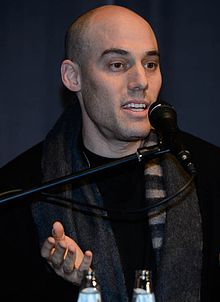
Joshua Oppenheimer, American film director notable for his two documentaries on the legacy of Fascism in Italy, one from the perspective of Blackshirts recounting their actions in helping suppress anti-Fascist political sentiment during the 1960s and 1970s as they discuss their past in a very candid manner and reenact their acts of repression with the other being a documentary of someone who lost family and friends to fascist repression confronting those who killed his family. Both documentaries are notable for being well-acclaimed and spotlighting the darker side of Fascist Italy, particularly as popular support for the regime declined as a result of the war in Ethiopia.
(Think of his documentaries on Fascist Italy as TTL's equivalent to The Act of Killing and The Look of Silence)
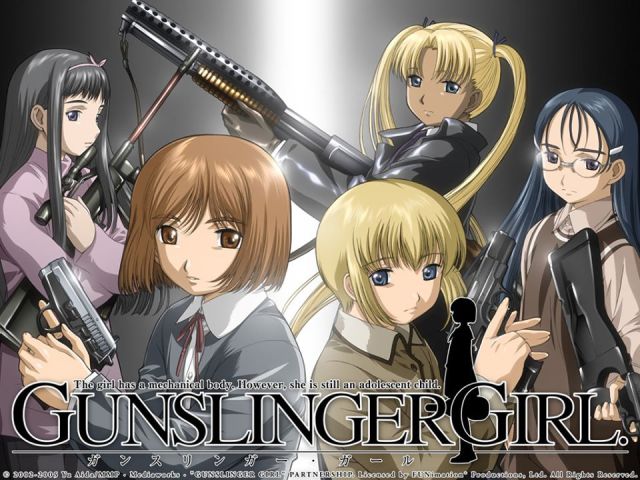
Gunslinger Girl, a 2003 anime from Japan about government-hired cyborg assassins assisted by their "handlers" of the Italian government (who in this scenario have voted neo-Fascists back in the future) and assassinating separatists. These girls, under the guise of the Social Welfare Agency, try to suppress the Five Republics faction, a communist terrorist group striving for the independence of the Libyan, Eritrean, Slovenian, Albanian, and Somali territories from Italy, and making Italy itself communist.
While popular in Japan, it has a following in Italy despite portraying the government as morally questionable. It also led to a gun boom in Japan thanks to crossover between the gun otaku and "moe" otaku demographic.
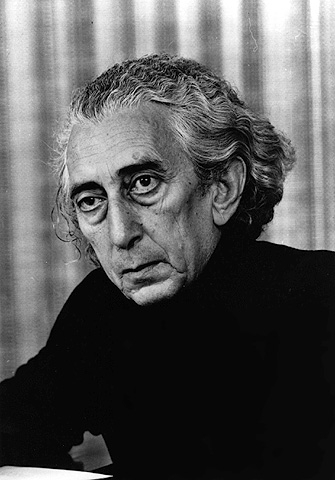
Abba Kovner, deputy prime minister of Israel during Anne Frank's era. His rallying cry, "Let us not go like lambs to the slaughter!" was a rallying cry to Jewish partisans trapped in Nazi party lines, and helped liberate Jews from concentration camps and ghettoes in the Baltics, particularly the Riga ghetto, where he eliminated the top SS fanatics holding the ghetto, including its commander Eduard Roschmann.
After the Soviet re-occupation of the Baltics, he fled to Israel and became active in local politics. Kovner initially supported the Italian nuclear strike against the UAR, though as a member of the left-leaning Mapam party, he still disapproved of fascism as "watered-down Nazis". He also turned into writing poems, something he picked up during his childhood in Vilnius, Lithuania, which he visited one last time in 1976 after Lithuania's regaining of independence. He later mentored Anne Frank as a Knesset member and became Frank's Deputy Prime Minister until his death in 1987.
Last edited:
Share: